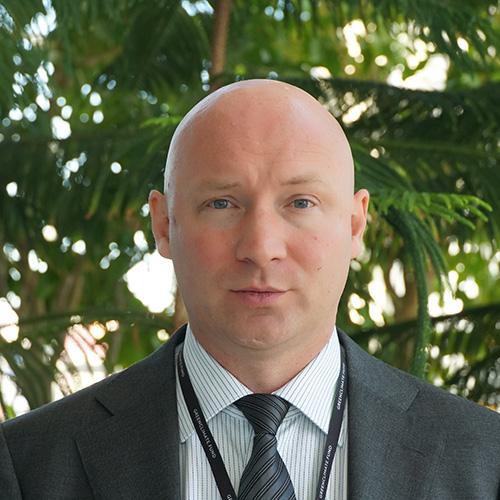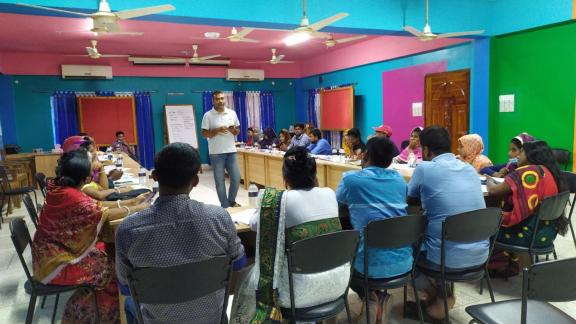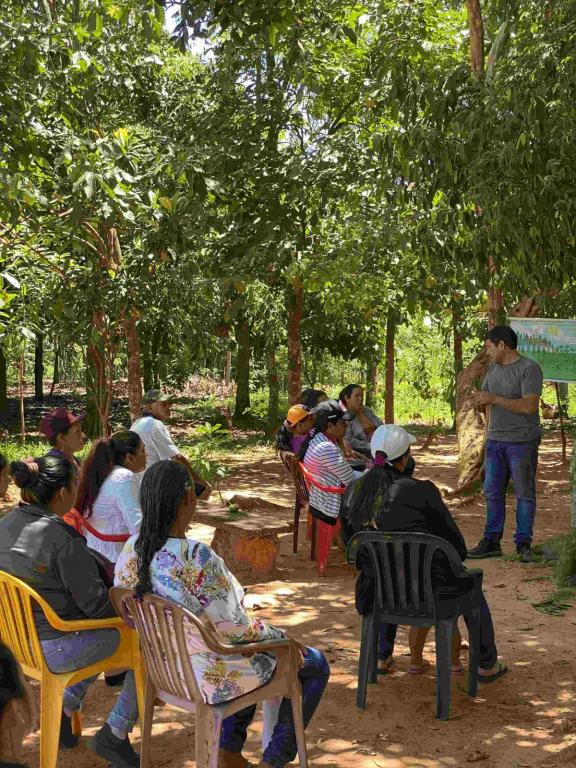Is the GCF targeting the right beneficiaries?
As mandated by the Paris Agreement, the Green Climate Fund (GCF) supports developing countries realize pathways towards low-emissions and climate-resilient development. These pathways are described in Nationally Determined Contributions (NDCs), which each Party to the Agreement updates every five years. To support this process, the GCF allocates half of its adaptation programming to particularly vulnerable countries: the small island developing States (SIDS), the least developed countries (LDCs) and African States. Such countries are often most exposed to the negative effects of climate change and face broader developmental challenges such as increasing debt levels and lower levels of foreign direct investment, which increase the strain on public finances.
Within the LDCs, the most vulnerable parts of the population are often located in remote rural areas with limited agricultural potential, scattered infrastructure, and thin markets. Their NDCs often reflect this, tending to prioritize adaptation interventions in agriculture and food security along with water resources. Thus, the GCF serves an important role in these countries to facilitate the implementation of pathways in NDCs and support vulnerable communities.
How do we know if the GCF is targeting these vulnerable communities and households? Whilst there is no systematic data from the GCF Secretariat on the targeting of vulnerable communities concerning GCF investments, we can glean some insights from baseline reports from the IEU’s impact evaluation team: the Learning-Oriented Real-Time Impact Assessment (LORTA) programme. As reported in the IEU’s Independent Evaluation of the Relevance and the Effectiveness of GCF’s investments in the LDCs, members of the LORTA team assessed the targeting of GCF projects by comparing project beneficiaries with the average characteristics of the population within the districts where projects are implemented. The projects included in this assessment were:
- FP097 - Strengthening climate resilience of rural communities in Northern Rwanda
- FP069 - Enhancing adaptive capacities of coastal communities, especially women, to cope with climate change induced salinity in Bangladesh
- FP026 - Sustainable Landscapes for Eastern Madagascar
The results were clear: these specific GCF projects in LDCs do target vulnerable households in the regions concerned.
FP097 - Strengthening climate resilience of rural communities in Northern Rwanda
In Rwanda, project beneficiaries are more vulnerable than the average household in the target district. The project aims to increase the resilience of vulnerable communities to climate change by restoring and enhancing ecosystem services of a sub-catchment of the Muvumba watershed, Gicumbi district. The project targets 9 sectors out of the 21 sectors in the district. The Accredited Entity for this project is the Ministry of Environment (MOE) of Rwanda while the executing entity is Rwandan Green Fund (FONERWA). The LORTA team compared the sociodemographic characteristics of GCF beneficiary households with a representative sample of the Gicumbi district based on the Integrated Household Living Conditions Survey (also referred to as Enquête Intégrale sur les Conditions de Vie des ménages). The IHLCS was deemed most suitable due to the type of indicators measured and the representativeness of the sample at the district level.
The socio-demographic characteristics of the households targeted by the Gicumbi project hint at a greater vulnerability compared to other households in the same district. The comparison reveals that target households have, on average, a lower level of literacy (with 48% of target households illiterate against 40% in the whole district), are less likely to own land (with 88% of target households owning land against 95% in the whole district) and more likely to live in a dwelling made of lower quality materials (with 55% of target households using mud bricks against 43% in the whole district).
Figure 1: IEU Mission Trip to Rwanda
FP069 - Enhancing adaptive capacities of coastal communities, especially women, to cope with climate change induced salinity in Bangladesh
Similarly, in Bangladesh, the comparison of target households with a representative sample of project districts revealed targeted households were more vulnerable. The project's overall goal is to strengthen the adaptive capacities of coastal communities against the impacts of climate change through the adoption of climate-resilient livelihoods and increase drinking water availability. The Accredited Entity for this project is the United Nations Development Programme (UNDP); implementing partners are the Ministry of Women and Children Affairs (MoWCA) and the Department of Public Health Engineering (DPHE). The target population is mainly women that are vulnerable to climate change-induced salinity in two districts, Khulna and Satkhira, in the coastal area of Southern Bangladesh. The LORTA team’s impact evaluation will shed light on whether the programme increased the capacity of beneficiaries to adapt to climate change. The comparison used census data from January 2021 to assess any differences between GCF beneficiaries and ‘average’ district households.
Overall, the comparison of target households with a representative sample of the two project districts reveals that targeted households have, on average, less income (monthly and daily income per household member), are more likely to have a household member with a disability or chronic illness (with 13% of target households against 7% across the two districts), are more reliant on agriculture or fishing-related daily labour, less likely to own agricultural land (with 21% of target households against 40% across the two districts), and are more likely to own less land in general. In addition, these households tend to have a lower level of literacy and education (except for primary education), are more likely to live in a non-permanent dwelling, and women are more likely to be solely responsible for fetching water (at 78% of target households compared to 74% across the two districts). These results hint at a greater vulnerability of targeted households compared to non-targeted households residing in the two project districts.
Figure 2: LORTA collecting baseline data in Bangladesh
FP026 - Sustainable Landscapes for Eastern Madagascar
Whereas in Madagascar, project beneficiaries are found to be broadly representative of the region, which means their characteristics are quite similar to the average characteristics of the general population of the region. The project aims to implement sustainable landscape measures to enhance the resilience of smallholder farmers, reduce greenhouse gas (GHG) emissions from deforestation, and make climate-smart investments in agricultural and renewable energy. The project is implemented in two forest corridors characterized by a climate-vulnerable and food insecure population relying on forest resources. The Accredited Entity for the project is Conservation International (CI). The comparison juxtaposed LORTA baseline data with the Malaria Indicator Survey 2016 (also referred to as Enquête sur les Indicateurs du Paludisme), which was identified as the most suitable due to the type of indicators measured and its sample size. The analysis also used the Afrobarometer 2018 survey.
The analysis found little difference between the beneficiaries of the GCF project concerned and households residing in the same regions in terms of key sociodemographic characteristics. However, two characteristics that do differ between the two samples are gender and ethnicity of the household head. Fewer women are heads of household among target beneficiaries. A larger share of project households is headed by men (90%) in comparison with households in similar regions (74%). This discrepancy merits further exploration to better understand whether this is systematic.
Figure 3: LORTA helps project teams understand which approaches to scale up
Overall, LORTA baseline data from these three GCF projects - Rwanda, Bangladesh, and Madagascar - indicates that these projects are indeed targeting vulnerable communities or populations that are representative of the region, in terms of household characteristics.
As the LDCs are particularly vulnerable to the negative effects of climatic change, and often share a range of broader developmental challenges, GCF projects in agriculture and food security could make a substantial contribution to enhancing resilience.
The degree to which GCF projects are achieving expected outcomes is being assessed by the IEU’s impact evaluation programme – LORTA. The programme uses international best practices in theory-based impact evaluations to build learning and measurement into GCF projects and programmes. LORTA supports GCF projects to develop and implement rigorous evaluation designs. You can follow updates from the IEU and the LORTA team to check the progress made on their impact assessment work looking into whether GCF investments have worked and to what extent.
Disclaimer: The views expressed in blogs are the authors' own and do not necessarily reflect the views of the Independent Evaluation Unit of the Green Climate Fund.




